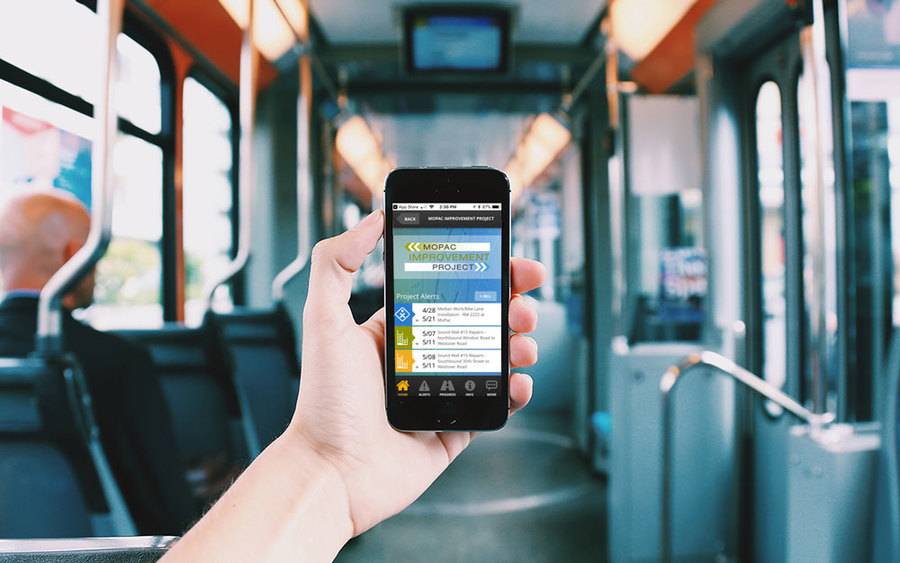How to Give Good Web Design Feedback

Design feedback shouldn't be a painful process. In fact, if it's a painful process, I'd say someone's not doing it right. The most successful projects are usually ones with a collaborative workflow between a well-balanced team of designers, developers, project management, and of course — clients!
It's essential to have a healthy feedback process, in which the client knows exactly what feedback is most helpful for the next round of revisions, and the designers and developers know how to translate and solve those problems. I know, I know, both web teams and people who have hired web teams are out there groaning right now (we get it, and this isn't a soapbox). Everyone has had their fair share of difficult projects and poor communication, but it doesn't have to be that way. In efforts to improve the feedback process for web clients and design teams alike, I'm writing this two-part article about How to Give Good Web Design Feedback, and Turning Client Feedback Into Your Best Work.
Before we can get into the nitty gritty feedback talk, we have to establish what lens we're looking at feedback from, and why that's essential for a good workflow. At the start of any new Monkee-Boy project, we go through a creative brief and a kickoff meeting with the client to establish the current perception, problems of a brand, new and existing functionality, and desired new brand direction. These goals set the tone for the entire project — once these goals are recorded and agreed upon, they inform all design decisions for the rest of the project. Setting these goals is a good start, but there is still a long way to go. The creative process is (very) subjective and contains thousands of decision points. For this reason we like to bring the client in on multiple points during the process instead of just going off of a list we created at the beginning of the project. At Monkee-Boy, we like to say "We know design and you know your business." While we do our best to dig in deep to each of our client's business models, sales cycles, etc., without an open channel of communication throughout the process, the project won't meet the expectations of either party and in some cases can result in an underwhelming outcome. Good feedback enables the client to express themselves and advocate for their business and customers. Additionally, it lets the design team they've hired to use that feedback and their expertise to do what they do best. So here are 7 points to help clients give constructive feedback so that everyone involved in the project can work toward the best possible result.
1. Assess the problems, not the solutions
I'll admit, assessing the problems is often more difficult than it sounds. It's hard to explain why you do or don't like something, and sometimes it's easier to explain by giving prescriptive information instead. It's much easier to say "remove the purple" than to say "the design feels too feminine," but unfortunately, "remove the purple" doesn't help your designer understand why you want them to remove the purple, and therefore you could miss out on a better way to solve the problem. Assessing solutions also leaves a lot of room for miscommunication, because a designer has to guess your intentions when trying to solve a problem. If you ask to remove the purple, the designer could swap with pink, which would leave you frustrated that they still didn't solve your problem, and them frustrated that they felt like they did what you asked. Ever been here before? Remember why you hired the designer - they have (hopefully) years of experience and a solid portfolio. Designers are problem solvers by trade, and most of us really love what we do. We're not painting you a picture, we're building you a tool that needs to work for you! We want your feedback, but if you prescribe exactly how we should do it, you're not utilizing what you are paying for, which is the skill and experience of someone who designs for web (across desktops, tablets, and mobile environments) all day, every day.
2. Be Specific
Vague feedback will rarely get you where you want to go with the design, and as hard as we try, designers still can't read minds (I can hear the voices of thousands of designers cheering, but it's true). It is the truth unfortunately - we are perceptive people and in some cases visionaries, but we crave feedback that helps us understand what our clients are thinking. Feedback like "This is a bad photo. I don't like the two men." doesn't necessarily help your designer find a better photo. Constructive feedback would be taking the previous sentiment, and instead saying:
"I don't feel this photo represents us as a company – we have a much younger and more diverse team than this photo portrays."
That feedback immediately gives the designer direction for finding a new photo, problem solved. As an aside: while finding photos, the designer is also keeping in mind the colors of the site, the placement of the photo, how the crop will work, etc, so it's very important that the client is able to give this constructive feedback vs. just going out and finding a stock photo they like which may not fit those other parameters. There is also prescriptive-vague feedback, which may seem like an oxymoron until you hear it. Things like "Make it pop!" or "I need you to have fun with it" fall into this category. "Pop" is difficult because it means different things to different people, so it is important to analyze the meaning based on the situation. I had a client many years ago as a freelancer that would constantly say these two phrases, and it took me almost a year to realize that when she said that, she actually just meant she wanted more color throughout the text. We could have saved lots of time, revisions, and money if we had been able to analyze what she actually meant by these phrases early on in our working relationship. You don't need to be specific about the solution, but the more specific you are about the problems, the better chance the designer can create something that works for you.
3. Focus on "why"
It is important both the designer and the client are able to give a reason for all design decisions made as it relates to the users of the site. For example, if you would like the designer to remove the blue from the site, it's worth asking yourself if you want to get rid of blue because you personally hate blue, or if its because you don't think it will resonate with your target audience. If I had a site selling baby cradles, and I only liked the colors black and red, it would still not be a good idea to design that site in black and red. Or rather, I could but I doubt my business would last very long. Giving the designer the reasoning behind your worries may also help them potentially come up with a better solution. For example, if you feel the social icons stand out too much, your first thought may be to make them smaller. If you are descriptive about this issue, and answer the "why" behind your suggestions, the designer may instead see that increasing the text around the social icons will fix the same problem and work better with the design. You hired the designer to solve these problems, so don't stress yourself out over doing their job for them — that's just a recipe for frustration on both ends. Give them the "why," and they can solve the "how."
4. Ask the designer
A good designer should have presented you an explanation along with the comps, whether it was a powerpoint, call, or in-person meeting. But even with that, there are often a lot of things we miss. So if you're confused about something and we didn't explain it — please ask! Every design decision has been weighed so the designer should be happy to walk you through the logic behind it. This is also a great opportunity to correct any misunderstandings. If the designer made the font very large because they thought most of your users were elderly, and it turns out most of your users are actually middle-aged, it makes sense to correct them and undo that design decision. Good questions include: "How does this font represent our brand?" "How will this color palette relate to our target audience?" "What happens if I click here?" and "What if we don't have this (much) content for launch?"
5. Filter the discussion
We know how it works - when the designer finally presents the comps, suddenly everyone who didn't previously want to be part of the project has an opinion. We also know the pressure of trying to appease higher-ups or stakeholders, and that the chances they will understand the goals as well as you do at this point are slim. You can't please everyone, but it is important to moderate the discussion and let the choices with the most reasoning and agreement rise to the top – before it ever gets to the design team.
"John in marketing would like to add more green to the site for a more modern look, but Sam in accounting wants to remove a lot of the color so it looks more minimal."
Or my favorite:
"We want more color in this, but we don't like blue, green, purple, pink, red, yellow, or orange."
Unfortunately, as much as we'd like to help you out, the designer can't do much to fix this for you until the feedback is sorted out. It's best to work out these sort of disagreements internally, understand why you each feel this way, and then present a cohesive problem to the designer so they can craft a plan of action. In this vein, it's also really important that there is one main point of contact between the client and the design team to ensure the project's success. Multiple people involved and in the kickoff and throughout the project is great, but one person on the client's side should be designated to have the final say to prevent project stalling.
6. If your designer tells you something will have fallout, listen to them
Part of our jobs is to understand the ramifications of how decisions will effect other parts of the site. For example, if you want huge oversized text on the homepage, we're going to have to put a character limit on it to maintain design integrity. And if you want photos for each of the latest blog posts on the homepage, you have to include a photo for every blog post you write. Or sometimes, something down the line will inevitably push the development part of the project out of the initial scope, and the designer needs to raise a flag for that as well. Even more common is design fallout — if you want a more colorful photo, the text over it may no longer be legible, and that section may need to be redesigned. If a designer sees that coming, it is their job to bring it up to you beforehand and then you can choose which is more important to you: a colorful photo or the existing text style. We're not being argumentative or difficult, we just know that sometimes these things are hard to predict in the initial round of feedback, so we're trying to keep the design from snowballing into something completely different if that isn't the intention.
7. Respect
Sometimes it gets lost in the midst of a hectic project, but it's essential to remember that we are all working towards the same goal. It's important to play to our respective strengths: the web team is expected to know the ins and outs of the web world and user experience, and the client knows their business, market, and brand better than anyone else. It's important to know your role in the project, and respect other's positions and viewpoints. This collaboration is crucial for a successful project. Creativity can be hindered if participants feel that their thoughts are unwelcome. The only way to enable this collaboration is to create and nurture an environment of honesty, accountability, professionalism, fun, and mutual from day one. Stay tuned for our next part in the series Turning Client Feedback Into Your Best Work!
Latest Articles

8 Ways to Optimize Your WordPress This Week
We use Wordpress to build all of our sites. In this article we’ll share 8 tips for optimizing your WordPress website for improved performance and functionality. From choosing a lightweight theme to optimizing your images, these strategies will help you get the most out of your site.
Continue reading
Transportation Mobile Apps: 10 Cool Features for a Better User Experience
A mobile app may not always make sense for your transportation project, but when it does, consider some of these great examples of how the right user experience can kick things up a notch.
Continue reading